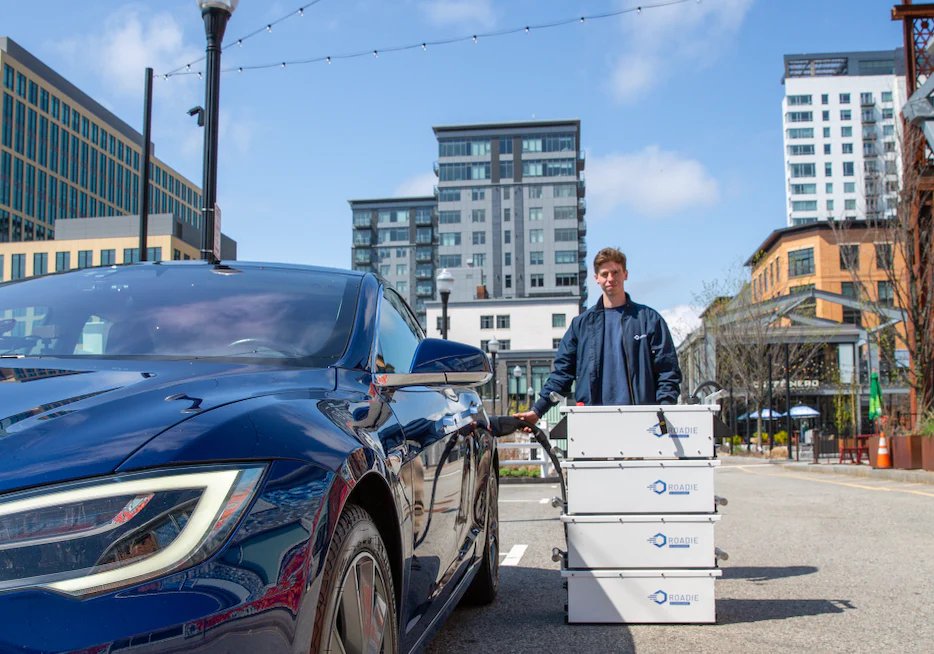Why You Should Consider a Level 3 Charger for Your Roadside Business
In today's dynamic business landscape, embracing electric vehicles (EVs) and catering to the charging needs of EV owners is essential for the success of roadside businesses. Towing an EV comes with risks and should be avoided if possible (check out our blog post “Why You Should Avoid Towing EVs” for more).
As the EV market expands, Level 3 chargers have emerged as a game-changer, offering significant advantages that can propel your business forward. In this blog post, we'll explore the key benefits of Level 3 chargers and how they can enhance your roadside business in terms of providing fast charging speeds, increasing your customer base and getting ahead of the competition.
Here are 3 reasons why you should consider Level 3 chargers for your Roadside business:
Fastest EV Charging Speeds:
There are 3 different levels of EV charging, Level 1, Level 2 and Level 3. Each differs in charging speeds/power output, price, installation, and construction. Level 3 EV charging, also known as DC fast chargers or DCFC, is the fastest charging station. They are capable of charging electric vehicles at a rate of about 60-100 miles every 20-30 minutes.
With their ability to provide substantial power output, Level 3 charging stations offer lightning-fast charging speeds that significantly reduce charging times. You’ll be able to quickly and safely charge an EV on the side of the road, making it more convenient for customers and ensuring they spend less time waiting on the side of the road for a flatbed tow truck. This speed advantage will make your business stand out and attract a larger customer base.
Increase Customer Base:
Utilizing Level 3 charging at your roadside business is a powerful magnet for attracting EV owners. By offering fast charging stations, you become an EV-friendly business that caters to the needs of a growing customer segment. This attracts EV drivers seeking reliable and efficient charging options, resulting in an expanded customer base. Electric car owners will choose a roadside provider that knows how to care for EVs. Offering roadside electric car charging instead of towing the vehicle with a flatbed tow truck, not only reduces the amount of time your customers will wait on the side of the road but also shows them that your business is choosing innovative solutions for new technology.
Stay Ahead of the Competition:
In a competitive landscape, it's essential to stay ahead of the curve and meet evolving customer demands. By being an early adopter of Level 3 EV charging stations, your roadside business gains a significant competitive advantage. While standard charging options may suffice for some businesses, offering a Level 3 charger sets you apart and positions you as an industry leader in the EV charging space. By embracing this advanced technology, you tap into a niche market and become an attractive choice for EV drivers seeking fast and reliable charging solutions.
SparkCharge Mobile EV Chargers
The Roadie, developed by SparkCharge, is a groundbreaking solution that brings immense benefits to roadside companies in the ever-expanding electric vehicle (EV) landscape. This portable and battery-powered mobile DC fast EV charger revolutionizes the way roadside businesses approach EV charging. With the Roadie, businesses can offer charging-as-a-service to their customers, attracting a new wave of EV owners and positioning themselves as go-to destinations for convenient and reliable charging.
The Roadie eliminates the need for costly infrastructure investments and lengthy construction processes, providing a flexible and agile solution that can be deployed immediately. By leveraging the Roadie, roadside companies can save time, money, and resources, while simultaneously driving customer satisfaction and loyalty. Roadside businesses can seamlessly integrate EV charging into their operations, capitalizing on the growing demand for EV charging solutions and staying ahead of the competition in the fast-paced electric era.


